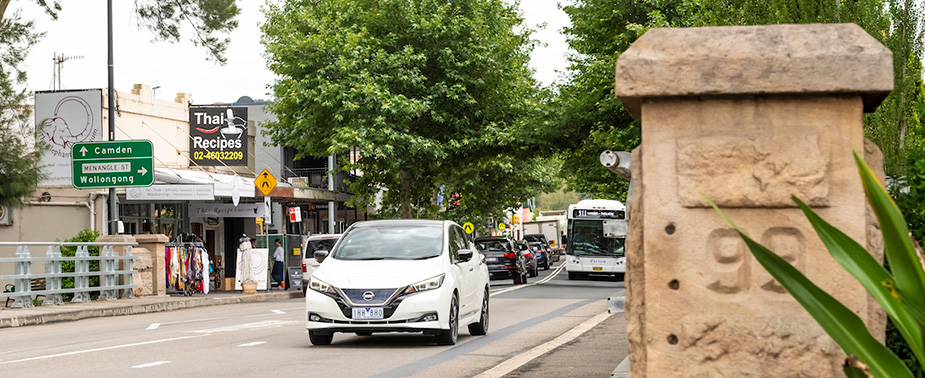Our Open Road team offers their initial thoughts on the soon-to-be-launched Nissan Leaf.
Finally here's a 'normal' electric vehicle
The trouble with electric cars up to this point is they've tried too hard to be different. This is evident in the bizarre-looking Mitsubishi i-MiEV; the BMW i3 with its skinny tyres and interior fashioned from recycled materials; and even the Tesla Model S with its oversized touchscreen in place of ordinary controls.
Driving the Nissan Leaf, however, is mostly like driving any other Nissan. It's even possible to turn off the e-Pedal so it drives like a regular petrol vehicle. Nissan's stated goal with this Leaf is to take the electric car to the mainstream and anyone who has driven an X-Trail, Qashqai or Pulsar will know what to expect. The Leaf is not a rolling environmental statement, nor is it outrageously expensive. It's a passenger car with a proper boot that just happens to be electric. That's Nissan's quiet but significant achievement.

Australia is a nation of drivers and we like to know we can travel long distances. Until fairly recently, electric cars simply haven't been a practical option in that respect. What's clear from our trip is that charging infrastructure remains the weak link in the electric vehicle revolution. While range and charging times present inconveniences, arriving at a charge point to find it occupied, or fitted with incompatible plugs, is the major hurdle that must be overcome.
While range and charging times present inconveniences, arriving at a charge point to find it occupied, or fitted with incompatible plugs, is the major hurdle that must be overcome. But that situation is changing by small increments. Batteries with greater capacity are increasing range, fast chargers are reducing the time needed to charge them, and investment from government and organisations (such as the NRMA) is expanding infrastructure. - Kris Ashton.

Driving it makes me smile
I love driving electric cars, even the weird and wonderful ones. They're different to drive than a vehicle with an internal combustion engine and, for me, that's one of the attractions. EVs develop maximum torque as soon as you accelerate, and the Leaf has 320Nm at its disposal, which can make for a quick getaway if you feel inclined. Its performance would actually embarrass many similar-sized hatches.
Most of the electrics are mounted under the floor so the centre of gravity is better, minimising body roll and pitching. The new Leaf has better steering than its predecessor, with fewer turns lock to lock, making the overall package feel sharper.
The biggest difference for first-time drivers will be feeling the regenerative braking system at work. When you slow down, rather than using the brakes in the conventional sense, lifting off the accelerator slows the vehicle to a complete stop if traffic conditions permit. Learning how to modulate the system without using the conventional brake doesn't take long at all. In fact, driving a car like the Leaf brings a smile to my face every time. - Tim Pomroy.

Loved (almost) every minute of it
There's so much to love about the Nissan Leaf. Having none of the old-fashioned internal combustion engine noise makes it a smooth and silent drive. I'm thankful we don't have to line up for fuel at service stations, with their nasty fuel smell and it's hard not to feel pleased (not smug) with yourself that you're driving a car with zero emissions.
There's also a satisfaction in knowing you're adding charge to the battery every time you brake or lift your foot off the accelerator. And it's an effortless drive up and down mountains, with no gear changes to slow you down.
But there are still things not to love, range anxiety chief among them. Worrying about too little charge left in your battery isn't a pleasant experience. There are still simply not enough public chargers, although the NRMA has already installed six chargers with lots more to come. - Suzanne Monks.
This article was originally published in the Open Road November / December 2018 magazine.








